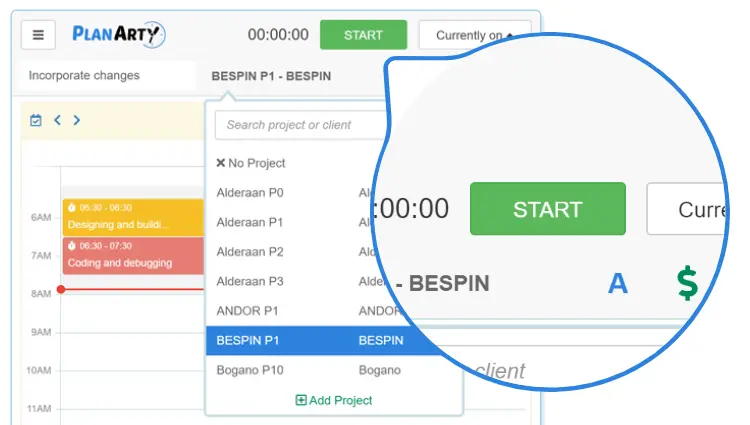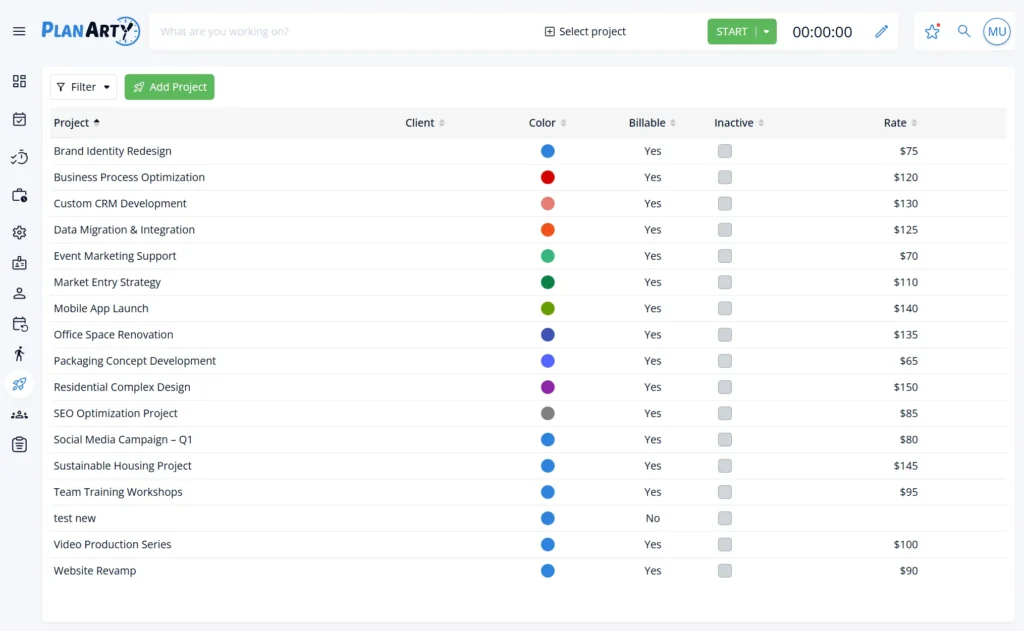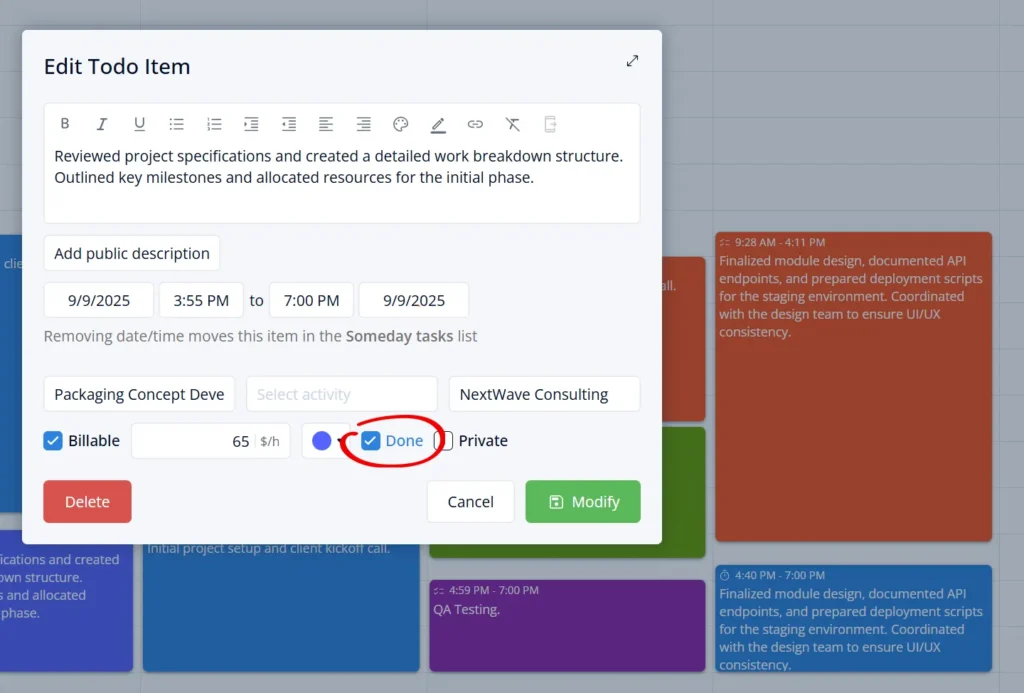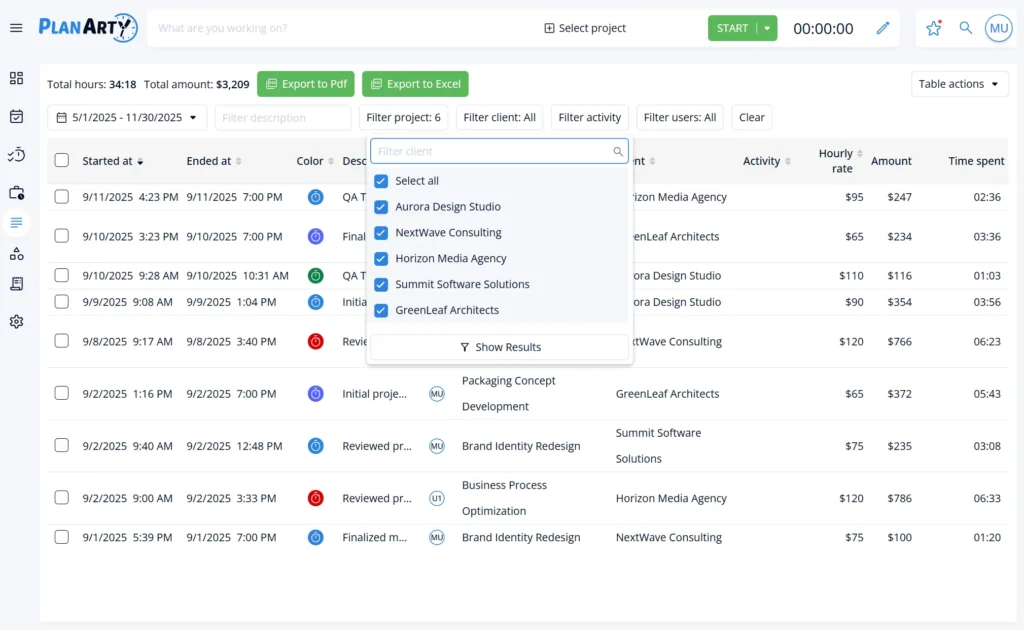Billable Hours
Without Blind Spots
Clarity in how time turns into revenue — for every project, every client.
PlanArty connects time tracking, project budgets, and invoicing into one clear flow.
You always know where each billable hour goes and what it’s worth.
“Clarity, not clutter. Because profit comes from precision.”
- No credit card required
- Join other service businesses who trust PlanArty

Where Most Teams Lose Precision
Spreadsheets were fine when projects were small. But as work grows, blind spots appear.
Every service business reaches a point where manual tracking stops keeping up.
Hours get recorded late, project data lives in different files, and you start estimating instead of knowing.
That’s when small inaccuracies turn into lost profit.
The Clutter
Messy spreadsheets and siloed data mean you never have one source of truth.
The Guesswork
Guessing at project profitability and hoping you’re right at the end of the month.
The Friction
Constantly chasing your team for timesheets and manually calculating the billable hours.
Collecting Billable Hours — Step by Step
A clear walkthrough of how billable work flows into one list you can invoice.
1
Step 1 – Add your clients and projects
Before any billable hours can be collected, you set up the basic structure of your work.
1) Add your clients
Go to Settings → Clients and enter the client names. That’s it — just the name. No CRM forms, no extra fields.
2) Create projects and link them to clients
- Choose the client
- Set whether the project is billable
- Define the hourly rate used to compute billable amounts
Optional: project color (calendar), short description, and task‑level overrides for billable flag and hourly rate.
You’ve now told PlanArty what work belongs to which client, and what an hour is worth. Nothing is billed yet — this is just clean structure.
2
Step 2 – Decide what counts as billable work
Once projects exist, you define how billable hours will be captured across your workspace.
| Type of work | How it’s logged | Example use |
|---|---|---|
| Time Tracks | Start/stop timer while working | Writing an article, coding a feature |
| Time Blocks | Planned time in calendar, marked Done when finished | Scheduled maintenance, weekly backups |
Choose how billable hours are collected (global setting):
You can change this setting anytime.
- Only tracked time — classic timer‑based workflow
- Only completed time blocks — for planned schedules
- Both — used by most teams, including us
In our company, developers track work with the timer, and we also schedule fixed‑time tasks like “Friday 14:00 DB backup.” Both need to be billable, so we use Tracks + Done Blocks.
3
Step 3 – Your team tracks work — and billable hours collect automatically
Day to day, your team just records work the way you decided in Step 2. PlanArty gathers the billable items in the background.
A) Time Tracks (live work)
Team members start the timer when they begin, and stop it when they’re done. Each entry inherits the project’s hourly rate and billable status — you can change the billable flag on the entry if needed.

B) Time Blocks (planned work)
You schedule blocks on the calendar (e.g., Tuesday 15:55–19:00 “Review project specs”). When the work is finished, the block is marked Done. If your global setting includes blocks, completed blocks appear in the billable list.
Small guardrails that save time
- Task‑level overrides: you can override the hourly rate and billable flag on specific tasks when needed.
- Two descriptions: add an internal note for your team and a clean client‑facing description for exports.
4
Step 4 – Review billable items before invoicing
When billing day arrives, you confirm what will be invoiced — in one place, without spreadsheets.
Filter to the scope you need
- Client / Project: focus the list to a single client or project.
- Period: quick presets like Last Month, or a custom date range.
- Type: tracks, completed blocks, or both (based on your global setting).
Totals you can trust
At the top of the list you see the exact total hours and the exact billable amount for the current filter — no calculator needed.
Speak Two Languages: “Tech-Speak” for Your Team, “Value-Speak” for Your Client
Each entry supports two descriptions. Use the internal note for technical detail, and the client description for a clean summary. If the client description is present, that’s what will appear in your export.
Quick audit checks
- Scan for unusually long/short entries and confirm billable flags.
- Sort by user to confirm everyone logged their work for the selected period.
- Spot-check tasks with overridden rates when needed.
5
Step 5 – Export clean billing data
Once everything is reviewed, you export the billable list and attach it to your invoice — fully transparent, already calculated, instantly verifiable.
One-click Excel export
The export contains only the filtered items — with totals, client-facing descriptions, hours, amounts, and task details. No cleanup required.
Works with any invoicing system
PlanArty doesn’t replace your invoicing tool — it feeds it. You keep using whatever you already use (Factura, QuickBooks, Zoho, etc.), but you never start from a blank sheet.
Why clients rarely dispute invoices from PlanArty users
- Every line has a client‑friendly description, not internal jargon.
- Totals match the work history — no rounding, no “extra lines.”
- You can answer any question with one click back to the source entry.
The easiest way to know if a tool is right is to use it on real work.
Start using PlanArty in your next billing cycle and see how much clarity one connected system creates.





